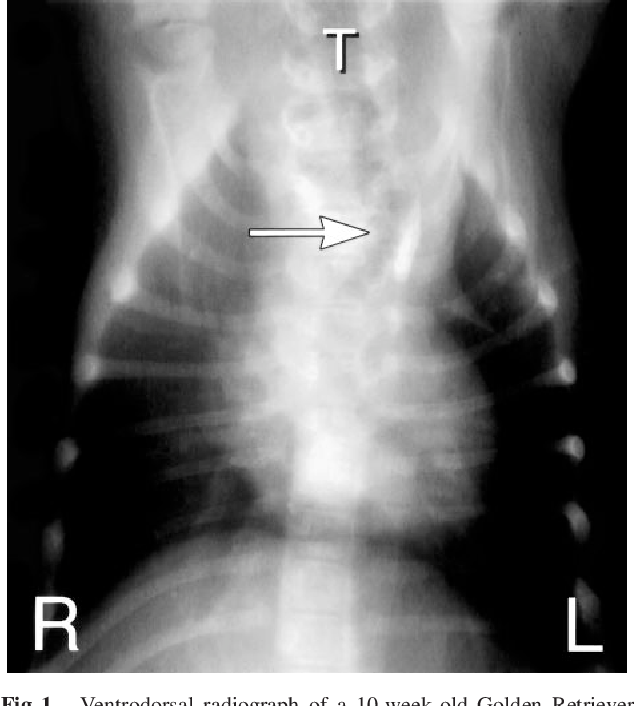Common places for sebaceous cysts. Primarily found in smaller dog breeds, tracheal collapse is a term used to describe a depression of the trachea.
What could lumps in a dog’s throat be? Quora
Thankfully, if it is a sebaceous cyst, dog parents can rest a bit easier knowing this type of mass, while sometimes annoying or unsightly, is benign.integrative veterinarian dr.

Trachea cysts dog. Primary adenoid cystic carcinoma in the trachea is a very rare tumor. Could it just stay at the mild stage. 1 tracheal collapse may or may not be hereditary.
Trematode (fluke) normally found in mink, but occasionally in the lungs of dogs and cats. A growth in the throat area can be benign, but may also be malignant. Primary tracheal tumors are an uncommon cause of upper airway disease in dogs and cats.
Follicular cysts are lumps under the hair follicles. I was wondering if a mild case of collapse trachea in a 5 month old puppy will definitely go into a severe case of trachea collapse where they can't breath and get the honking cough. However, it does happen and can have serious consequences for the health of your pet.
They are the most commonly reported tumor in the trachea and only in young dogs ( tracheal</strong> osteochondromas can be differentiated from intraluminal tracheal chondromas: Laryngeal and tracheal chondrosarcomas are malignant, slow growing, progressive, invasive tumors of the larynx or voice box and trachea, which is the windpipe. In both dogs and cats, the most common cranial mediastinal mass (cmm) is lymphoma,followed by thymicepithelial tumors (tets).1,2 other types of cmm may occur in both species but are relatively rare.
However, primary neoplasms of the trachea are uncommon in dogs. Benign tracheal tumors in dogs include osteochondroma, most commonly found in young dogs, followed by chondroma and leiomyoma. It may be congenital (present at birth) or acquired (developed later, sometimes secondary to other diseases).
A sebaceous cyst may be firm or it may feel like it is filled with fluid. Right now he just does the quick gag cough about twice a day if that. The only sure way to know what is going on is by seeing the vet.
Sebaceous cysts can occur anywhere but are usually found on the head, neck, ears, and anus. Many dogs with this condition will make the “honking or gagging” noise discussed earlier and have trouble breathing properly. The trachea of one juvenile male giraffe (25 months of age) weighing 754 kg was used in this study.
In hypoplastic trachea, the cartilaginous rings that make up the structure of the trachea fuse or overlap which lead to its narrowing. However, they are not the most common cysts that dogs have. • adult pairs live in subpleural cysts that communicate with bronchiole.
A variety of tumors, including primary malignant tumors, secondary. Follicular cysts are more common in dogs. Laryngeal and tracheal chondrosarcomas are seen in both dogs and cats, most commonly in middle aged.
17,19,20 numerous tumor types have been described in dogs, including adenocarcinoma, carcinoma, mast cell tumor, leiomyoma, extramedullary plasmacytoma, osteosarcoma, chondroma, chondrosarcoma, osteochondroma, and ecchondroma. Small dog breeds are most commonly affected by collapsing trachea, especially pomeranians, poodles, yorkshire terriers , and chihuahuas. In some instances, a tumor in the throat will arise because of a malignancy elsewhere in the body.
9 malignant tumors include lymphoma (cats particularly), sarcoma (fibrosarcoma, chondrosarcoma, histiocytic sarcoma), adenocarcinoma, squamous cell carcinoma, and plasmacytoma. The narrowing caused by a redundant dorsal tracheal membrane can be dynamic, depending on phase of respiration (see fig. The trachea is the tube that runs from just under your dog’s larynx to the bronchi and lets air into and out of his lungs.
The latter do not contain marrow spaces, are entirely composed of cartilage, are usually pedunculated and attached to the tracheal ring by a cartilaginous pedicle, and occur in. Usually these cysts are solitary, but some dogs may be prone to getting several cysts in the same area of the body. The length of the neck was 125 cm.
The trachea feels like a large firm mass located midline on the dog's neck, below the jaw. Arise from the mesenchymal tissue. These tumors have no known cause and are extremely rare in small animal veterinary medicine.
Eggs produced in the cysts are carried. Sebaceous cysts are also known as epidermoid or epidermal cysts. If the cyst is infected, it may be red, inflamed, and painful.
Finding a lump on your dog can be unnerving. Primary malignant tumors commonly originate from the. As seen, the causes for a a lump on a dog's throat can be many!
The bronchoscopic biopsy confirmed adenoid cystic carcinoma. 9,31 other considerations are hematoma secondary to trauma. This is more commonly seen in dogs with a broad, short skull (brachycephalic) and may be present as part of brachycephalic syndrome.
Julie buzby explains what a sebaceous cyst on a dog looks like, why one might occur, and details the diagnostic and treatment process. Surface epithelium or the salivary glands, whereas most benign tumors. A ct scan showed a mass in the tracheal wall.
In certain dogs, especially the larger ones, the trachea may appear as a more prominent feature, explains veterinarian dr. A tumor in the throat in dogs is an uncommon occurrence.

Trachea rupture repair technique in dogs Vetlexicon

uniportal VATS tracheal tumor resection with carinal

